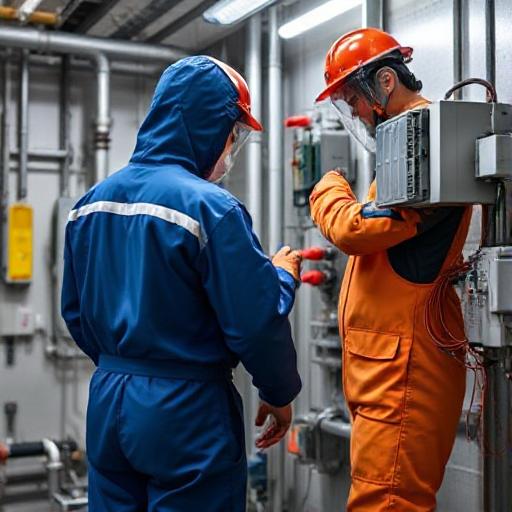The Future of HVAC Safety: Innovations in Protective Clothing for Technicians
As an HVAC technician, your safety on the job is paramount. You’re constantly navigating electrical, chemical, and physical hazards. But here’s the good news: 2025 is seeing some exciting innovations in protective clothing that not only enhance your safety but also your comfort and efficiency. Let’s dive into the latest advancements in HVAC workwear and how they’re setting new standards for technician safety.
OSHA Mandates and the Need for Advanced PPE
OSHA regulations have long emphasized the need for specialized protective clothing and PPE in the HVAC industry. With the unique risks you face, from electrical shocks to chemical exposure, having the right gear is critical. Innovations such as insulated gloves, safety glasses, and chemical-resistant gloves are becoming more sophisticated, directly reducing risks and enhancing your protection.
Adapting to New Refrigerants and Energy-Efficient Equipment
The rise of energy-efficient equipment and advanced refrigerants is reshaping the requirements for high-performance PPE. For instance, Aspen Refrigerants’ R454b requires additional chemical and respiratory protection. This shift is largely driven by the fact that 61% of homebuyers now rank energy efficiency as a top-three decision factor, increasing the demand for updated HVAC systems and protective gear.
Smart Product Integration and Technician Safety
With the integration of smart products like the Ruud econet 800 series smart thermostat, the demand for up-to-date electrical PPE is more crucial than ever. These smart systems require precise installation and servicing, emphasizing the need for advanced safety gear that can keep pace with technological advancements.
- Insulated and chemical-resistant gloves for handling advanced refrigerants.
- Safety glasses meeting ANSI standards to protect against debris and metal shards.
- Respiratory protection for handling modern cleaning agents.
- Magnetic flame-resistant blankets for live electrical work zones.
- UV-protection workwear for outdoor tasks.
Meeting the Challenges of a Growing Industry
With the HVAC industry facing potential job shortages of up to 225,000 by 2025, the adoption of innovative, comfortable, and versatile PPE is becoming a critical operational factor. Innovations in anti-static uniforms and impact-resistant clothing are helping to address these challenges, ensuring that you remain safe and efficient on the job.
Conclusion: Equipping Yourself for a Safer Tomorrow
In conclusion, staying updated with the latest in HVAC protective clothing is not just about compliance; it’s about safeguarding your well-being and enhancing your job performance. As the industry evolves, so should your gear. Embrace these innovations to ensure you’re prepared for whatever challenges come your way.
Ready to upgrade your HVAC safety gear? Explore the latest innovations and ensure you’re protected on the job.
FAQ
What are the latest innovations in HVAC protective clothing?
Recent innovations include insulated and chemical-resistant gloves, magnetic flame-resistant blankets, and UV-protection workwear.
Why is energy efficiency influencing HVAC PPE requirements?
The demand for energy-efficient systems requires new refrigerants and smart systems, which in turn necessitate advanced PPE for safe handling and installation.
How are smart products affecting HVAC technician safety gear?
Smart systems like the Ruud econet 800 series require updated electrical PPE for safe installation and servicing, highlighting the need for advanced safety gear.
What protective gear is essential for handling new refrigerants?
Essential gear includes chemical-resistant gloves, respiratory protection, and insulated gloves to handle advanced refrigerants safely.
How is the HVAC job shortage impacting PPE demands?
The potential HVAC job shortage is driving the need for innovative, comfortable, and versatile PPE to maintain technician safety and efficiency.


